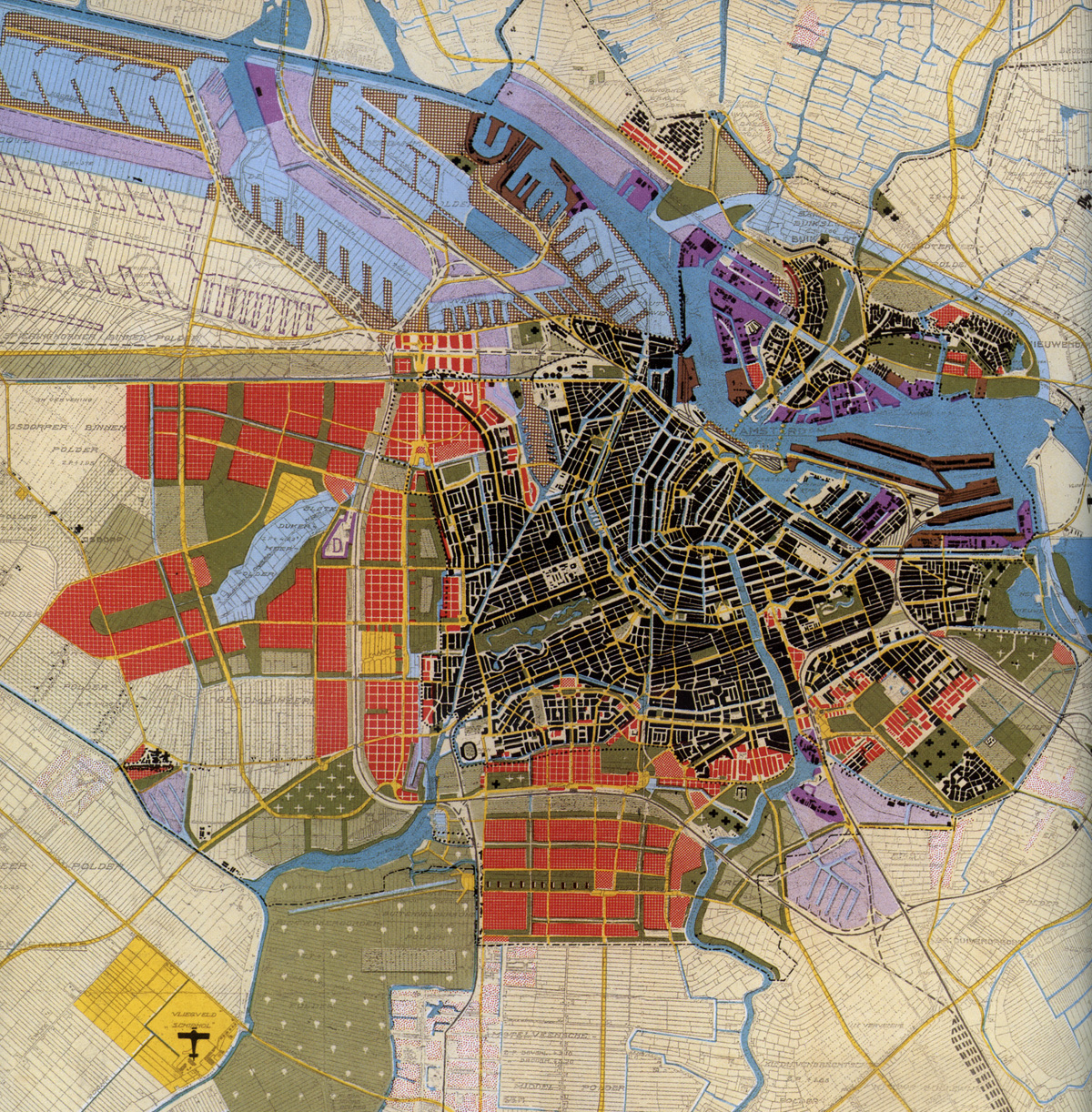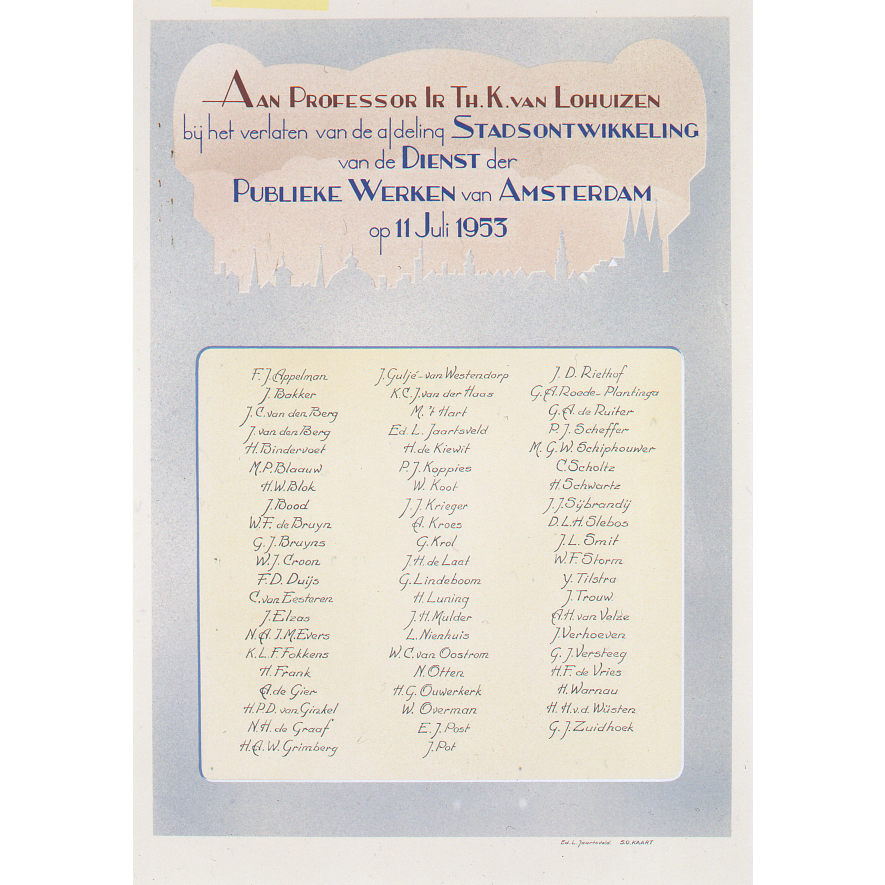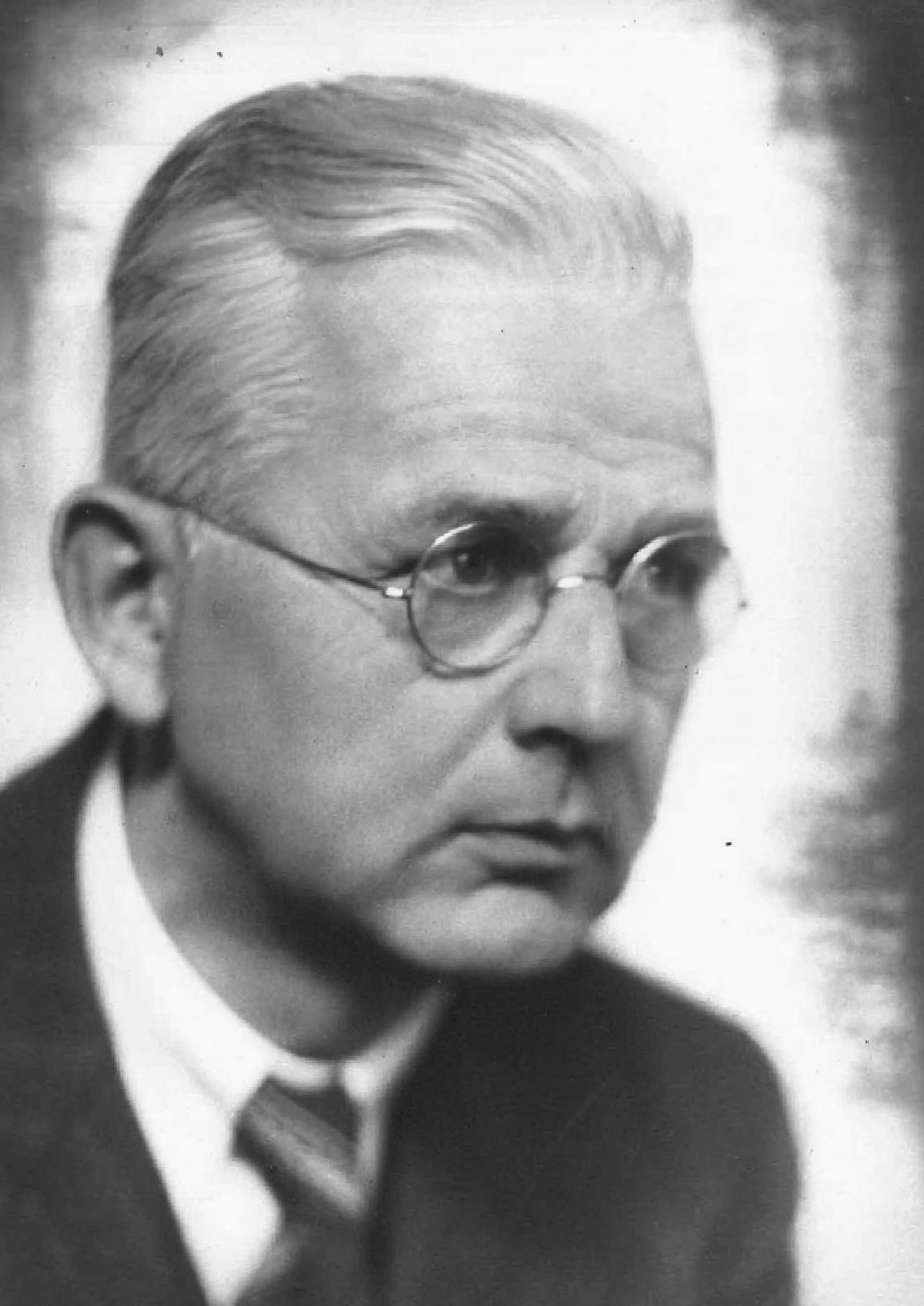About Th.K. van Lohuizen
According to Theodoor Karel van Lohuizen (1890 - 1956), urban development is the making of concrete plans for the future arrangement of a certain area for human use. This planning must meet high standards of beauty and efficiency. The planning area should have an orderly appearance.
Therefore, in order to start drawing up a plan in a responsible way, the creator of the plan must be able to have a clear idea of the area and the needs of current and future users. Developing and refining methods of research and collecting the necessary data is the work of the urban planner. Between 1920 and 1956, Van Lohuizen played a pioneering role in the development of preliminary urban research, first in practice and later in the academic sphere.
De naam van Theodoor Karel van Lohuizen zal voor altijd verbonden blijven aan het Algemeen Uitbreidingsplan van Amsterdam (AUP) waarvoor hij samen met Cornelis van Eesteren het grondplan tekende volgens de functionalistische principes van het Nieuwe Bouwen. Dankzij Van Eesteren en Van Lohuizen kreeg Amsterdam zijn Westelijke Tuinsteden (Slotermeer, Geuzenveld, Slotervaart, Overtoomse Veld en Osdorp), waar licht, lucht en ruimte het woonklimaat bepaalden.

The Randstad and the Green Heart
Between 1921 and 1929, Van Lohuizen worked as an engineer in charge of research at the Housing Service in Rotterdam. In this function, he already proved to be a sharp observer of the dynamics of social phenomena with a good sense of graphic presentation of research data. He saw the fact that there is generally little time available for collecting data as a challenge. In Rotterdam, he learned to work on urban planning issues at various geographical levels of scale: from a traffic survey at street level to a broad statistical preliminary study for a regional plan for South Holland. En passant, during this period, he made the contours of the Randstad and the Green Heart visible for the first time.

Head of research department at Stadsontwikkeling of the Public Works Department of the municipality of Amsterdam
In 1928, Van Lohuizen was hired as the head of the newly established research department at the Urban Development Department of the Public Works Department of the municipality of Amsterdam.

The General Extension Plan Amsterdam
Shortly after his appointment to the service, Cornelis van Eesteren was engaged as designer. They were both immediately thrown in at the deep end with the assignment from the city council to draw up a general expansion plan for Amsterdam. Van Lohuizen, with a small staff of loyal assistants, did an exemplary job of fulfilling the task assigned to him. Within a few years, a wealth of data was collected on population development, the use of land and buildings, transport and many other matters. Everything was carefully recorded on sheets and mapped out in the form of bar charts and flow charts. Much attention was paid to a comprehensible design and presentation of the data. To this day, the two voluminous volumes of the foundations of the General Plan for the Expansion of Amsterdam from 1934, together with the Explanatory Memorandum and the Appendices, are considered a monument to urban development and planning.

A study of future population development by studying economic developments
Van Lohuizen worked systematically. In contrast to his colleagues in the design department, he tried to complete, step by step, a schedule that he had drawn up around 1929 in consultation with his superiors. This work plan was probably inspired by examples from England and the United States. Despite pressure from municipal politics and the management of the department to make primarily practical quantitative contributions to the planning, Van Lohuizen saw an opportunity to carry out a serious survey of social development. This entailed a study of the demographic and economic structure of the city of Amsterdam in a broader geographical framework. Underlying this comprehensive study is the premise that future population development can best be derived from an in-depth study of the economic development and potential of the planning area. An attempt in this direction in the 1930s failed because of the need to provide quick answers to more concrete questions regarding the quality of the housing stock, the composition and growth of transport flows and the need for recreational areas.

Scenario for the construction of a tunnel under the IJ
Although his superiors in Amsterdam considered research into the economic drivers of national, regional and local development too time-consuming and questioned the utility value, Van Lohuizen continued to search for this 'grail of spatial development'. In order to realise this ambition, he sought contact with scientific institutions in Amsterdam and Delft. This resulted in an appointment as a private lecturer in urban development at the University of Amsterdam in 1940. Eight years later, he was appointed extraordinary professor in urban planning research at the Technical High School in Delft. At the beginning of the 1950s, he was given the honourable task of leading a national survey to underpin a national plan for the spatial development of the western Netherlands. In this survey, he was guided by the hypothesis that the development of employment in industry determines the extent of regional migration between agricultural and urbanised areas.

Appointment as private lecturer Urban Planning at the University of Amsterdam
In 1940, he was appointed private lecturer in urban planning at the University of Amsterdam. Illustration: Diploma presented to Prof. Th.K. van Lohuizen on the occasion of his retirement from the Urban Development Department in Amsterdam on 11 July 1953.
Hoogleraar in het stedebouwkundig onderzoek aan de Technische Hogeschool in Delft
Eight years after his appointment as a private lecturer at the University of Amsterdam, he was appointed extraordinary professor of urban planning research at the Technical College in Delft.
Leading the national survey for the spatial planning of the western Netherlands
In the early 1950s, he was given the honourable task of leading a national survey to underpin a national plan for the spatial development of the western Netherlands. In this survey, he was guided by the hypothesis that the development of employment in industry determines the extent of regional migration between agricultural and urbanised areas.

(1890 – 1956)
Theodoor Karel van Lohuizen

The socio-economic studies for which van Lohuizen provided important impetus form the basis of the final report by the Commission West des Lands
The study into the socio-economic structure of the Western Netherlands that Van Lohuizen led from 1952 onwards took up so much time that he decided to leave the service in Amsterdam in 1953. The study on the development of the western part of the country required more time and energy than anticipated. Referring to the contractually agreed upon deadlines, Van Lohuizen and his colleagues from the National Office for the National Plan were put under pressure by the political and official leadership. The socio-economic studies to which Van Lohuizen gave an important impulse form the basis of the final report of the West of the Country Commission in 1958. This report is a milestone in Dutch spatial planning, the basis for the first national policy document in 1960. Van Lohuizen did not live to see these milestones achieved. Illustration: Map showing the concentration of the number of people employed in services and institutions related to the national administration, based on data from the 1947 census (circa 1953)

The life's work of Th.K. van Lohuizen
This biography of Th.K. van Lohuizen, written by Arnold van der Valk, was published in 1990. In his inaugural speech as a private lecturer at the University of Amsterdam in 1941, Van Lohuizen stated that urban planning is ultimately creative, architectural work. It is based on a thorough knowledge of the physical characteristics of the area and the characteristics of the society.